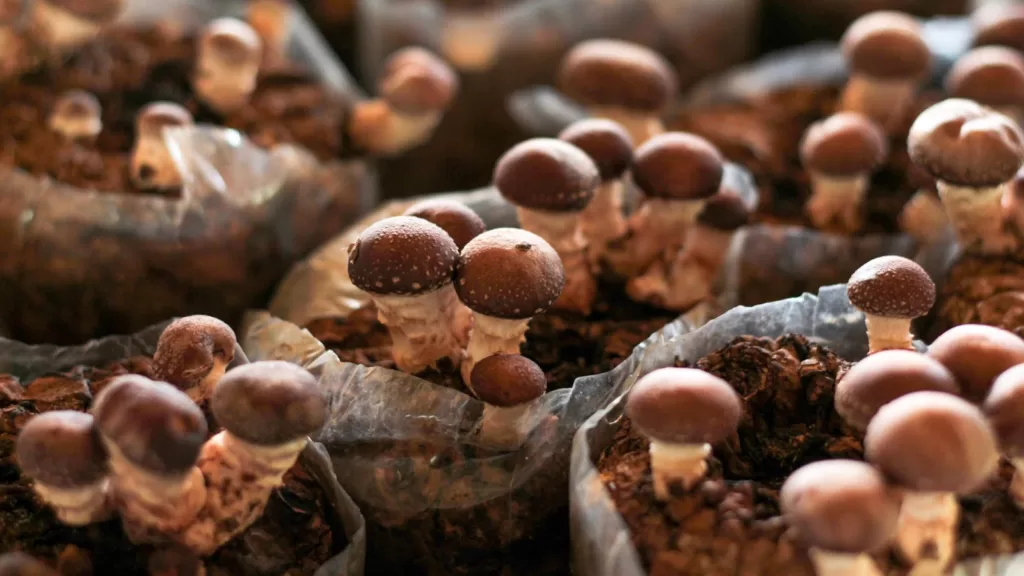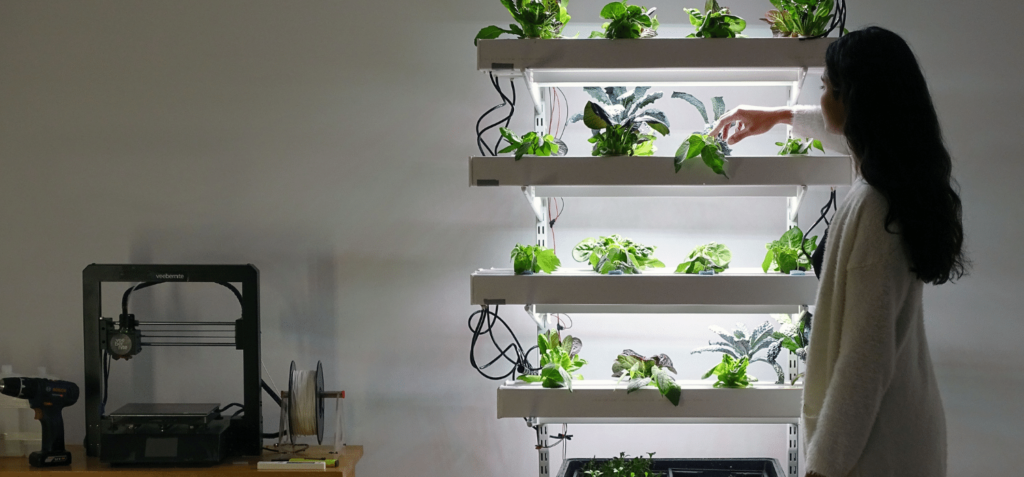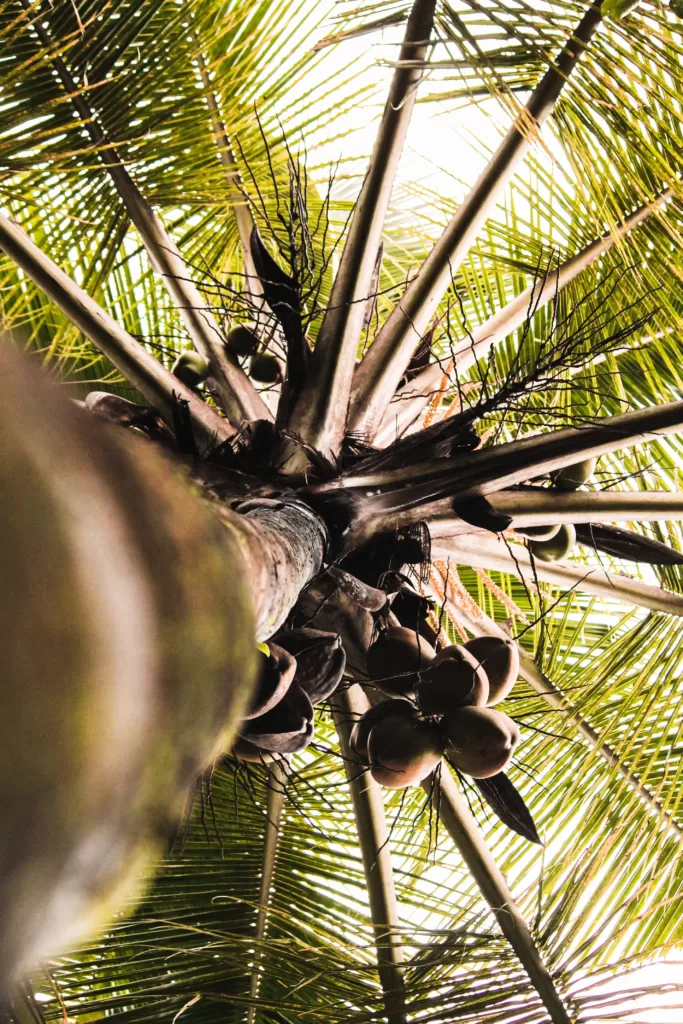Composting is an easy and sustainable way for beginners to reduce waste and create a valuable soil amendment for their garden.
Here are some basic instructions for beginners to get started with composting:
- Choose a location for your compost bin or pile. It should be in a convenient spot in your yard that gets some sunlight, but is also sheltered from strong winds.
- Create a mixture of “brown” and “green” materials. “Brown” materials include dry leaves, straw, and wood chips, while “green” materials include kitchen scraps, grass clippings, and plant trimmings. A good ratio to aim for is about three parts brown materials to one part green materials.
- Add your kitchen scraps to the compost pile, along with any other organic waste such as yard trimmings. Avoid adding meat, dairy, or oily foods, as they can attract pests and create unpleasant odors.
- Mix the materials in the pile and make sure they are moist but not waterlogged. Add water as needed.
- Turn the pile occasionally to aerate it, which will speed up the decomposition process.
- Depending on the temperature, the composting process can take anywhere from several weeks to several months. The compost is ready to use when it is dark and crumbly and has an earthy smell.
- Use your compost to improve the health and fertility of your garden by spreading it on the soil surface, tilling it into the soil or using it as a top dressing around your plants.
It’s also a good practice to have a small bin or container near your kitchen to store the scraps before transferring it to the compost pile. You can also consider setting up a worm bin to speed up the process. Composting can also be done in small apartments using worm composting method. If you are still unsure about the process or want to learn more, there are many online resources and guides available to help you with the composting process.
Table of Contents
Creating Compost Soil
Creating compost soil is a simple process that involves breaking down organic matter, such as kitchen scraps and yard waste, into a nutrient-rich soil amendment that can be used to improve the fertility of gardens and landscapes. Here are the steps to create compost soil:
- Gather materials for your compost pile. You’ll need a mix of “brown” materials, such as dry leaves and straw, and “green” materials, such as kitchen scraps and grass clippings. A good ratio to aim for is about three parts brown materials to one part green materials. Avoid adding meat, dairy, or oily foods, as they can attract pests and create unpleasant odors.
- Set up your compost bin or pile in an area of your yard that gets some sunlight, but is also sheltered from strong winds.
- Add your materials to the bin or pile and mix them together. Make sure that the pile is moist but not waterlogged. If the pile is too dry, add water until it is damp like a wrung-out sponge.
- Turn the pile occasionally to aerate it. This will help to speed up the decomposition process and also ensure that the microorganisms have enough oxygen to break down the organic matter.
- Monitor the temperature of the compost pile. Ideally, it should be between 130-160F for optimal composting.
- Wait for the compost to fully decompose. Depending on the temperature, the composting process can take anywhere from several weeks to several months. The compost is ready to use when it is dark and crumbly and has an earthy smell.
- Once the compost is ready, you can use it as a soil amendment in your garden by mixing it into the soil or using it as a top dressing for your plants. You can also sift the compost to remove any large chunks of undecomposed material.
When using your compost soil, it’s important to remember that it’s still a raw material and should be used in conjunction with other soil amendments, such as fertilizers, to ensure that your plants have all the necessary nutrients.
Composting food waste for beginners
Composting food waste is a great way for beginners to reduce their waste and create a valuable soil amendment for their garden. Here are some basic instructions for beginners to get started with composting food waste:
- Gather a compost bin or pile: You can choose from a variety of compost bin options such as tumbler compost bin, wire bin compost bin, wooden compost bin or plastic compost bin.
- Start adding food waste to your compost bin: You can add food waste such as fruit and vegetable scraps, eggshells, coffee grounds, and tea bags to your compost bin. Avoid adding meat, dairy, or oily foods, as they can attract pests and create unpleasant odors.
- Keep the compost bin or pile moist: The compost should be moist but not waterlogged. If the pile is too dry, add water until it is damp like a wrung-out sponge.
- Turn the pile occasionally to aerate it: This will help to speed up the decomposition process and also ensure that the microorganisms have enough oxygen to break down the organic matter.
- Monitor the temperature of the compost pile. Ideally, it should be between 130-160F for optimal composting.
- Wait for the compost to fully decompose. Depending on the temperature, the composting process can take anywhere from several weeks to several months. The compost is ready to use when it is dark and crumbly and has an earthy smell.
- Once the compost is ready, you can use it as a soil amendment in your garden by mixing it into the soil or using it as a top dressing for your plants.
As you begin composting your food waste, it’s important to remember to regularly add brown materials to balance the green food waste, keep the pile moist and aerate it regularly. This will ensure that the compost breaks down efficiently and produces a nutrient-rich soil amendment that can be used to improve the fertility of your garden.
How to make compost fertilizer at home
Making compost fertilizer at home is a simple process that involves breaking down organic matter, such as kitchen scraps and yard waste, into a nutrient-rich soil amendment that can be used to fertilize your plants. Here are the steps to make compost fertilizer at home:
- Gather materials for your compost pile. You’ll need a mix of “brown” materials, such as dry leaves and straw, and “green” materials, such as kitchen scraps and grass clippings. A good ratio to aim for is about three parts brown materials to one part green materials. Avoid adding meat, dairy, or oily foods, as they can attract pests and create unpleasant odors.
- Set up your compost bin or pile in an area of your yard that gets some sunlight, but is also sheltered from strong winds.
- Add your materials to the bin or pile and mix them together. Make sure that the pile is moist but not waterlogged. If the pile is too dry, add water until it is damp like a wrung-out sponge.
- Turn the pile occasionally to aerate it. This will help to speed up the decomposition process and also ensure that the microorganisms have enough oxygen to break down the organic matter.
- Monitor the temperature of the compost pile. Ideally, it should be between 130-160F for optimal composting.
- Wait for the compost to fully decompose. Depending on the temperature, the composting process can take anywhere from several weeks to several months. The compost is ready to use when it is dark and crumbly and has an earthy smell.
- Once the compost is ready, you can use it as fertilizer for your plants by mixing it into the soil or using it as a top dressing. You can also make a compost
How to use kitchen waste for gardening
Using kitchen waste for gardening is a great way to reduce household waste and create a valuable soil amendment for your plants. Here are some tips for using kitchen waste for gardening:
- Composting: One of the best ways to use kitchen waste for gardening is to compost it. You can compost kitchen scraps such as fruit and vegetable scraps, eggshells, coffee grounds, and tea bags to create a nutrient-rich soil amendment that can be used to improve the fertility of your garden.
- Make a compost tea: You can make a compost tea by steeping finished compost in water for several days and then using the water to fertilize your plants. This is a quick and easy way to make use of your compost and give your plants a boost.
- Vermicomposting: Vermicomposting is a way to use kitchen waste for gardening by using worms to break down the organic matter. This method is great for apartment or small spaces where outdoor composting is not possible.
- Sheet-mulching: This method of composting is simply layering of organic matter in the spot where you want to create the compost. Its the most natural way of composting and requires no container, but can take up more space and will take a longer time to decompose.
- Bokashi composting: Bokashi composting is a type of anaerobic composting method, where you use specific microorganisms to ferment the kitchen scraps, instead of traditional aerobic decomposition.
- Use as a fertilizer: Some food scraps such as crushed eggshells, coffee grounds, banana peels, etc can be added directly to the soil as they decompose quickly.
It’s important to remember that composting takes time, it’s important to be patient.
How to make compost at home step by step
Making compost at home is a simple process that involves breaking down organic matter, such as kitchen scraps and yard waste, into a nutrient-rich soil amendment. Here is a step-by-step guide to making compost at home:
- Gather materials: Collect a mix of “brown” materials such as dry leaves, straw, and wood chips, and “green” materials such as kitchen scraps, grass clippings, and plant trimmings. A good ratio to aim for is about three parts brown materials to one part green materials. Avoid adding meat, dairy, or oily foods, as they can attract pests and create unpleasant odors.
- Choose a location: Decide on a spot in your yard that gets some sunlight but is also sheltered from strong winds.
- Set up your compost bin or pile: You can choose from a variety of compost bin options such as tumbler compost bin, wire bin compost bin, wooden compost bin or plastic compost bin.
- Add materials: Begin by adding a layer of brown materials to the bottom of the bin, then add a layer of green materials on top. Repeat this process until you’ve used all of the materials.
- Moisten the materials: Make sure that the pile is moist but not waterlogged. If the pile is too dry, add water until it is damp like a wrung-out sponge.
- Turn the pile: Turn the pile every 2-3 weeks, or more often if it starts to smell or look slimy. This will help to aerate the pile and ensure that the microorganisms have enough oxygen to break down the organic matter.
- Monitor temperature: The ideal temperature range for a compost pile is between 130-160F.
- Wait for decomposition: The composting process can take anywhere from several weeks to several months, depending on the temperature. The compost is ready to use when it is dark and crumbly and has an earthy smell.
- Use the compost: Once the compost is ready, you can use it as a soil.







